Interview With Darcy Norman From German National Team
It is a great privilege to be able to interview Darcy Norman who is part of the German National Team and very important cog in Die Mannschaft.
Darcy was also responsible for getting me in touch with Gregg Berhalter which eventually resulted in me being hired as strength and conditioning coach/sport scientist for Hammarby Football Club from Stockholm, Sweden in 2012 and 2013. He also arranged me to visit Bayern FC in 2011 and spend some quality time with Marcelo Martins, who was head strength and conditioning coach during that time. I also managed to visit Octoberfest with my close friend Jovan Buha, who is third season in a row head strength and conditioning coach for Bayern Basketball Club. Darcy also arranged me to meet the rest of the German National Team strength and conditioning staff (Shad Forsythe and Yann-Benjamin Kugel) and drink couple of Paulaners with them (Shad thanks for showing me the right way to pour weissbier). Darcy is also my go-to-guy when it comes to bunch of training related topics.
In short, I owe Darcy a LOT and I wanted to say ‘Thank you Darcy’ for everything, including taking your time to do this interview.
Well, enough of me trying to kiss-ass to Darcy… I will leave you to enjoy the insights from the member of the World Cup Winning team.
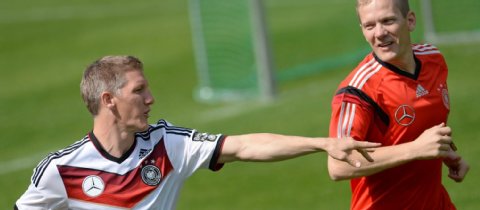
Mladen: First off, BIG Congratulations on winning the World Cup with Germany Darcy. That’s one hell of a achievement and something a lot of us dream off. Before I start picking your brain, please share some info about yourself – who you are, what you do, how did you end up in German National team and what are your future plans
Darcy: Thanks, much appreciated. Certainly humbled and honored for the opportunity and experience. It was the right time, right place, with the right people working as a collective group. About myself, I am a physiotherapist, strength coach and athletic trainer that has worked in each capacity as well as combined capacities in various sporting aspects. I have more recently taken on more data analytics responsibilities as well which I find frustrating and interesting all at the same time. I like to say I have Domain Spectrum Competency….. In the sports world. I have worked with a variety of different athletes in different avenues throughout my career from kids to pros, working with individuals to teams, consulting to being on the pay roll, rehab to performance training. My team experiences have been with Professional Cycling working with Team High Road the 5 years of their existence, Bayern Munich (Pro Soccer) 2008-10, as well as the German National Soccer Team since before the Euro 2012. I have been with EXOS since 2003 and attribute a lot of my opportunities to being a part of that team. They are a fantastic group of people that are passionate about what they do and love solving performance problems. Who you know gets you there, what you know keeps you there as I sometimes say. I am fortunate to live in Truckee (Lake Tahoe) California and share time in a home office and traveling working on projects.
As far as future plans, I want to keep moving forward with data analytics as I think it is a very important aspect of training especially with the how technology is improving. I am more into simplifying the process and making sure the rubber is meeting the road. I don’t know if I have any hard goals to work with this or that team but more with people or groups of people that have a passion to get better and work toward a common goal. I guess being from Canada I would also be interested in working with an NHL team as I think the culture and athletes are interesting. I am always interested in learning as at the end of the day all of this stuff is related and it’s just how you apply it.

Mladen: I have shared some of my thoughts on training the national teams (HERE) – what I am wondering is how did you solve the common issues, like interactions with the players’ clubs, bringing all player to common vision and culture? What are the differences and similarities between working in national team versus club?
Darcy: I think first you have to drop the ego and do everything you can for the benefit of the athlete. What does that mean…, Shad (the head performance coach of the DFB) did a phenomenal job communicating with every team our players played for. After every national team break each team would get a report on everything their athlete’s did so they had an idea of what kind of player they were getting back. If we did any testing he would pass that along as well.
Did Shad have to do that, absolutely not, but he did and started dialogue with the clubs and teams. As the teams started realizing we had their interests and their players interests in mind, we would also get responses back, not from all, but that is OK, but at least we were doing our part and not judging anyone along the way. The players saw this and would also help in the process as they knew we had their best interests at heart. Sometimes you don’t know what the clubs themselves are dealing with. If you can do something to make a situation better, do it, be happy about it and don’t expect anything in return. One thing we could do was monitoring their playing time throughout the season to get some sort of snap shot of where they were to gain a little perspective.
Once the players came to the team there was a big focus on communication and managing expectations. We tried to communication a clear, honest message and expectations and had objective information to support our message, as well as options if something needed to be improved upon. All the staff were on the same page. We had a mantra that in our staff meetings we may disagree but when the meeting was over we left our differences in the office moving to working with the players supporting each other. So if there was any dirty laundry to air, we did it in meetings behind closed doors putting egos aside and keeping the best interest of the player in mind. We did everything we could to be completely organized with all programming and scheduling, reporting and scouting so if there was a disagreement with a player or players(s) we had good information and platform to have a meaningful discussion.
Differences and similarities with a club vs the national team….. You could probably write a book on this. Working with a club was like seeing your family every day, you love them but sometimes you get sick of them and how they act etc,. Not every day is going to be a great day so how do you manage those expectations, what do you confront and what do you let slide. It was more about really educating the players to empower them to make the correct choice and providing the environment to conveniently allow it. So I might not be as militant about things happening or happening at that specific time etc. The player is also playing for money, it’s their job/profession. With the club the player has different stresses ie family, day to day things) than in the national team as sometimes it can be a break to get away from those stresses. I always tell people to imagine if you worked in a place where every hour someone was barking instructions at you to do something and that is was for your own good and the better of the company. I want to rebel just making that statement. So I think you have to create an environment to where athletes can make the best decisions on their own and you are more there to create a guided learning decision making process. I know it may sound hokey but a lot like raising kids.
With the national team, it is optional, the player doesn’t have to be there to do their job, they are playing for pride and their country so there is a different motivation. Certainly it helps their club/job life but it is optional. Also you don’t see each other ALL the time. Its like getting together for a guy’s weekend. Everyone is happy to see each other, catch up on stories since the last time, so there is always this feeling of a little bit of a reunion. Haha, this is also my opinion, maybe if you asked others they would tell you something different. A club you can create more of a long term plan for a player whereas working for the national team you have very little time to make change so it is taking what you got and trying to do the biggest bang for your buck things while still educating the player for the long term. Also with the national team you are together for a short term goal compared to a season and it is easier to get through the stuff that a player may not like, like getting in recovery tubs consistently. It is easy to see the end where with the club, it’s a long season and you are just going to do it again next year…….

Mladen: How was the overall preparation organized? How did you solve the issues with players coming after long season, managing young vs. old guys, injured and broken vs. unfit? How did you rebuild them and get them ready for dense competition in the heat? What was the preparation philosophy? What screening did you use long term to identify individual strengths~weaknesses? What did you struggle with and what showed as an opportunity? What could be done better?
Darcy: WOW another big question and a topic for a book…..First there needs to be a clear vision and values the team is living by and from there it is easier to make choices when you get to the detail or minutia. You look for players and staff that embody those same values so it is an easier fit. The next thing is the communication I mentioned to both players, team and staff and from there it is collecting as much info as you can about every topic and not for the sake of collecting it but so you can make better more informed decisions. Data is great and all but it is what you do with the data that is important, so still your methodology, not the number itself.
So first you are looking the season data of your players and the competition you may face and from that you have your game plan. Once you have your game plan then it is organizing time and you are looking for common denominators and patterns putting in the big rocks or logistical things you can’t move. Sometimes some of these logistical pieces are also solvable if you step away and keep an open mind. The more common denominators and patterns the easier it is to manage logistics like planning, travel, loading etc. It also gives you a better platform to deviate from and come back to like managing the load of an older vs younger player or adjusting loads for players that need it vs others that may need a break. Once you fill in all the common ground then you, with your information, can start individualizing everything to meet the need of the player. And don’t get me wrong it’s not as easy as this may sound and you may have to make compromises along the way for the greater good. But as long as you have a good reason, some info to back it up and are honest with your team and players moving forward nobody can fault you. The press will and the egos of some will but that is the presses job and the reality of some peoples egos and where they are in life.
So once you have all that figured out as well as thought throw all the variations that could happen then it is executing and collecting information/data to fine tune the process. Again easier said than done. So if a player is unfit you can use for example MAS style programming to top off their tank without blowing them up keeping into perspective what the next days have to come. If your rehab process and training process follow a similar cycle then it makes it much easier for guys to jump up or down on the parallel track.
To the heat question it was basically finding the same or harder conditions to train as they would face in a game so mentally they had been there before. Their bar was raised so anything less was a breeze. It is a little bit of a military style approach done in a thoughtful way (not saying that the military is not thoughtful, quite the opposite). So we trained in the heat of the day at game time for our more intense sessions but made sure we were prepared with prep work, recovery, hydration, nutrition and were monitoring these things to make sure numbers were not out of the ordinary. It was also a little like aerobic work so the way our camp was designed the players were always outside, maybe not in direct sunlight but we had and indoor outdoor camp as you can get acclimatized sitting in an air conditioned room. So the guys in the off time would be outside playing darts or lawn bowling (bocce ball) etc just being out in the humidity for a huge portion of the day.
I think we did the usual type of screenings, FMS, monitoring blood, weight, body comp, GPS monitoring load, SSG (small sided game) performance, Speed, Accel etc. Could we have done more testing, yes, but it made us come up with other skill of the sport testing that didn’t take away from the rhythm of training. I guess things we struggled with was wanting to employ more monitoring but the whole team could not agree on it so we didn’t do it, so that might have been more opportunity. I think the stuff we did do, we did consistently and to the best of our ability and we always had a reason for it that the players knew as well so they were bought into the process. Motivation through education……! I think the opportunity comes in the little details that people see every day but don’t pay attention to. For example eating at half time. How many teams do you see cramping and not eating in the pauses. Simple but very effective. I realize fitness plays a role but if you take one of those gels when you are cramping it can buy you another 15min.
Cooling might be another area. I can’t say as I was not in other team locker rooms but I thought we did everything possible to make sure and get their core temps down before, during and after games and training to facilitate recovery. Simple things like completely changing their kit at half time, if you put a sweaty kit on a scale it could be a couple kilos of extra weight. All of the sudden you have 2 kilos less which adds up over time coming out for the second half. Is it more of a pain in the ass for the kit man, absolutely so everyone has to be bought in.
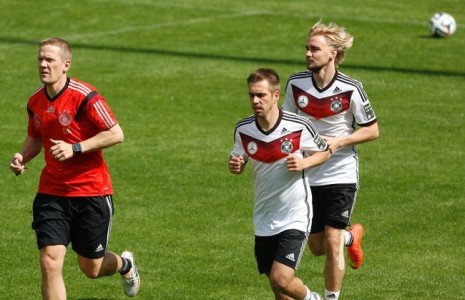
Mladen: Seems that Germany invested a lot of money in building Campo Bahia – how important was such a project for the success of German Team? What can other national teams learn from Germany?
Darcy: I think it was a key to our success on many levels. First to the acclimatization as I mentioned above, 2nd it was very relaxing so when it was recovery time you could hang by the pool like you were on vacation drinking a banana smoothie out of a coconut with a bright little umbrella. These guys play all year long and never get a break so if you can put micro breaks in there it is good for the body and good for the head. Why can’t you have the best of both worlds…..but the expectation has to be communicated and managed.
What can other teams learn….hard to say cause I don’t know what they do The thing that I am most impressed with is the Germans organizational and planning skill leaving no rock unturned as well as finding that balance between work and recovery. They are realistic and practical sometimes to a fault but in this situation I think it was to a benefit. I think the other thing is leave your ego at home. Everyone has a role on the team, players and staff and I think we had the best team behind the team with everyone wanting to learn and if someone brought a new idea it was discussed and thought out. No fire hosing….. Because you may have the better answer but logistically it didn’t fit in with how everything was going, or created. Its kind of like research, the information might be phenomenal but may not be practical to implement. So is it a bad thing that you don’t do it….? You just have to weigh through every option and see if you can take something and put it in play.
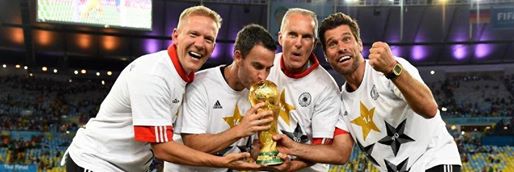
Mladen: World Cup involved dense period of games in the heat. How did you prepare for that, and what strategies did you use to recover players during halves and extensions, between games? What did other teams do successfully? How important are those strategies? What are your thoughts on Qatar 2022 from performance in the heat standpoint? New rules by FIFA?
Darcy: I think I covered some of these in the previous questions but it gives you a sense of how all this stuff is intertwined. As far as recovery strategies we did simple things well. We created a little kitchen in the locker room after the game where our chef prepared good meals for all the players first, staff 2nd to get them fed up before we got on the flight back. I spoke of the cooling pieces, we had movement quality sessions built into training to maintain the movement quality of the players or get them better. You don’t get worse working on correctives. I think these strategies are the little 1-2% that add up that can make a difference. Its like the grand canyon 1-2% can be all the difference to falling into the canyon or having the best view possible to see everything it has to offer to not seeing all that you could have seen if you were 1-2% closer to the edge. I guess the staff/coach has to decide that for themselves which is also part of the process. We had an interesting talk from a guy Mike Horn who was an adventurer who walked to the North Pole in 3months in -72 deg C weather (not a typo), that was his goal, so his 1-2% choices were about living and dying and if you knew you were going to die you would figure out a way to do that 1-2% to minimize the chances of dying. This is the same thing but nobody dies at the end so it is easy to let those decisions that might be hard logistically to solve go by the way side. The thing is, is that they are solvable and you have to just take a little time to sort it out and have the open mindset from the staff to make it all happen.
Qatar… I am not so much worried about the players as that will be the focus to solve those problems. I am worried about all the people when they are not in the air conditioned stadiums the other 22hrs and 30 min. (if the game doesn’t go to extra time). This question is beyond my pay grade and I am not sure if my opinion will change anything here so we will just do our best to prepare our players given the opportunity we are still working with the team or another team. ;-). At the end of the day the two teams play under the same circumstances, the one that prepares better wins. (typically). So if happens we will try and think through all scenarios to come up with the best plan possible to execute. That is the beauty of sports……
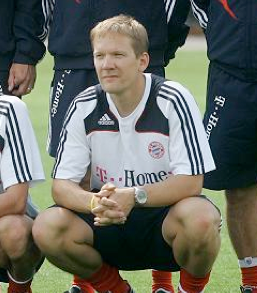
Mladen: Did you employ any monitoring and analytics to help you with training individualization and prediction? How important are those strategies?
Darcy: Yes we did employ a monitoring system(s) as I mentioned above. I think they are very important because the data gives you more context on what is happening. As I mentioned the data is only as good as what you do with it though so to me your methodology is more important. Prediction is also really important but very hard to solve and I can’t say I have any good predictive models. I just have data that gives me context to try and make better informed decisions. If you call that predictive great, if not I wouldn’t either. I think you need a ton of data for the predictive part and it is hard to get that in a national team where you are only together 7-10 days once every 1-2 months and 1 time for 6 weeks every two years with a constantly changing crew where your influence has little impact on their yearly program. Does that mean we don’t try, absolutely not. I think it is a key piece because if you can organize your data and you have good data then it can really help upgrade conversations, systems and in the end, the team.
Mladen: Thank you very much Darcy for sharing your experiences and thoughts. Wish you all the best with all your future endeavors.
Darcy: Thank you Mladen for all your work and sharing this information. Also I have to say thanks EXOS, the DFB staff and players for opportunity to be part of the journey as well as my wife and family, being gone for those periods are not always easy. Also thanks to all the other colleagues out there working to move the profession. If anyone has questions I pride myself on returning all emails, I just can’t guarantee how soon. Thanks again and I hope some of what I was able to share stimulates some greater thinking and upgrades systems. All the best. D




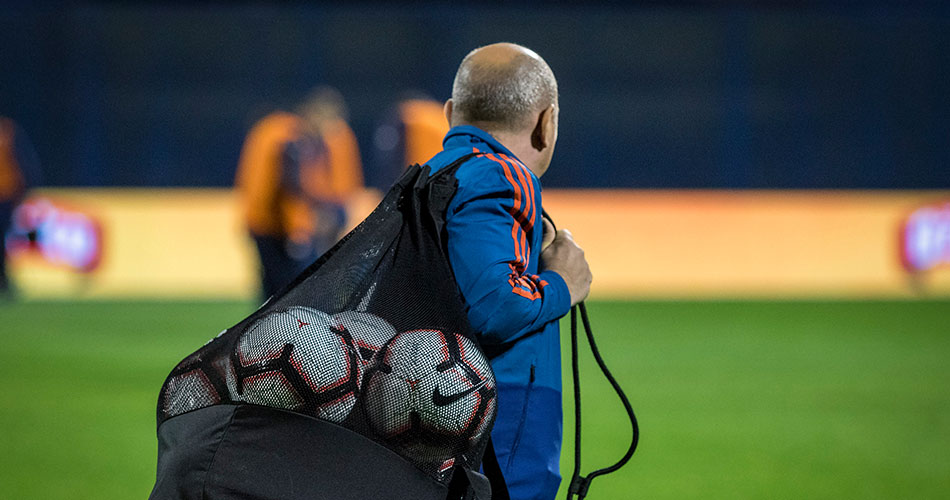






Responses